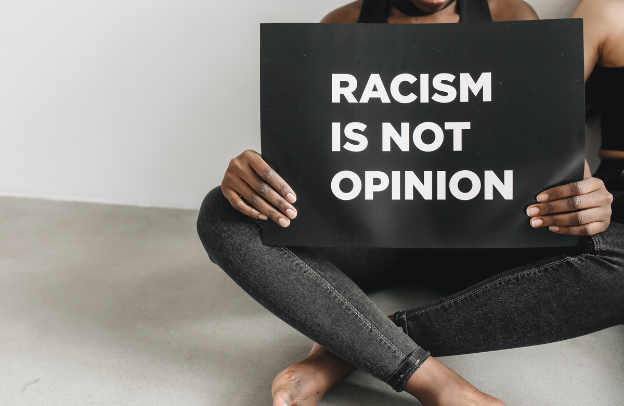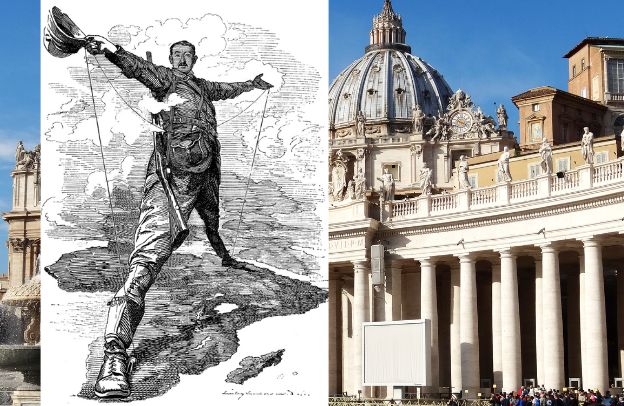Our House Slaves: European Centuries Of Heritage

This is part six in the series “Racism And Slavery: Reflection On Human Madness by Stefano Anselmo”. See previous publications to learn more.
Want to learn more about storytelling? Start by downloading the first chapter of The Storytelling Mastery.
Here is a list of all the articles in the series – Racism And Slavery: Reflection On Human Madness by Stefano Anselmo:
- Racism And Slavery: Reflection On Human Madness by Stefano Anselmo
- What Racism Requires: Religion And Science Were To Go Hand In Hand
- Racism And Slavery: How The Hamitic Theory Began To Crumble
- In America Before Columbus: Exploring European Racist Stereotypes
- Racism And Slavery: African Crisis Is An Invention Of The West
- Our House Slaves: European Centuries Of Heritage
- Religious Endorsement Of Slavery As A Legitimized Business Both In Islam And Christianity
In the earliest period, slaves were few and usually treated humanely; their status worsened with economic development. Those leading a harder existence worked in mines, while artisans were much better treated and often received a wage with which they could buy their freedom. Between the 5th and 4th centuries BC, Athens reached 100,000 slaves, with an average of 3 or 4 per family.
Rome Domestic slaves enjoyed a better life and the possibility of manumission, especially during the imperial age, by becoming freedmen. Simultaneously, however, the struggles among gladiators or with ferocious beasts testify to how the Romans enjoyed spectacles of unparalleled cruelty. Rebels were punished with crucifixion.
In Rome, the power of the master over the slave was absolute. Later on, however, it was allowed, similarly to what happened in Greece, for slaves to seek refuge in a temple and request to be assigned to another master.
Christianity contributed to making the lives of slaves more humane, but it did not abolish slavery, which was confirmed by Constantine and Justinian, despite them being Christians. However, the Church favored the manumission of slaves who were baptized, and the number of slaves decreased with the end of conquest wars.
See also Christopher Tounsel on Christianity and Political Imagination in South Sudan
Middle Ages Unlike infidels and schismatics, prisoners of war who were Christians before capture were not enslaved. In the Germanic world, in particular, the legal status of slaves did not differ much from that of Roman times before the empire; however, living conditions were often better in many cases.
Later on, they could form a family unit and autonomously cultivate small plots of land by paying tribute and providing labor services to their masters, thus assimilating to peasants.
Arab Merchants Even today there are two Africas, the Arabophone North and the sub-Saharan one. Moreover, history, including that of our days, is replete with racist episodes towards black people. Just look at how they are discriminated against in countries like Tunisia and Algeria, not to mention Sudan.
Most of them, born and residing in Mediterranean countries, have enslaved ancestors, deported north by the trade. This division is very present and particularly felt by Arab peoples for whom blacks are still fundamentally slaves and as such, to be despised.
The victims of the Arab slave trade, from the 7th to the 19th century of our era, were mainly the inhabitants of sub-Saharan Africa. It is estimated that between 14 million and 17 million Africans were captured, along with approximately 1-2 million Europeans. Additionally, at least three times as many Africans were killed during raids or died during the journey north to the Arab world.
The Arab trade is sometimes called the Arab-Muslim or simply Islamic trade, referring to non-Arab peoples united only by the Muslim religion. Indeed, the raids were directed against non-Muslim peoples who refused to convert or against those who refused to pay the jizya, a discriminatory tax imposed on non-Muslims in Islamic states.
The Arab trade was predominantly directed towards black Africans from present-day South Sudan, Kenya, Tanzania, Eritrea, Ethiopia, and Mozambique, deported by Arab merchants to states now known as Turkey, Iran, Iraq, Pakistan, and India. Even before the Arab invasions of the 7th century, in addition to slaves from regions south of the Sahara, Europeans were also found in North African markets, resold in Byzantium and Islamic countries.
The trade, in European slaves, developed to such an extent that the Church repeatedly prohibited the sale of Christians reduced to slavery by Islamic merchants. In particular, it sought to counter the slave trade between Central Europe and Muslim Spain, where they were often sold to North African merchants.
The Saharan-Moorish society of the northwest (roughly corresponding to present-day Morocco-Mauritania) has always been divided into castes. Among these, the lowest was that of the Harratin, made up of black Africans who have always been considered the caste of slaves. Despite laws enacted in Mauritania since independence against slavery, the harratin are still today considered and treated as slaves.
The Senegalese hal-pulsar (tukulër) living along the Senegal River near the Mauritania border openly declare themselves to be the children of former slaves and confirm that slavery still exists today, although it is manifested in a less overt manner.
The deportation of Africans by Arabs decreased significantly from the beginning of the 20th century following the abolition of slavery in many states.
The Sudan Case After centuries, today Sudan still commits human rights violations. Nowadays, these conflicts are portrayed as tribal conflicts, but we know that the Janjaweed (literally “Devils on Horseback”) of our time (in the past there were other forms of banditry) are perpetrators of abuses, mass murders, and, according to the US government, even genocide against the peoples of Darfur, often animists or Christians.
The Janjaweed are a pro-government militia mainly composed of members of Arab and Arabophone ethnicities. Today’s paramilitaries are the heirs of the infamous Janjaweed, militants of Arab ethnicity.
Khartoum encouraged the actions of these militias, which practice ethnic cleansing, causing 400,000 deaths and over two million refugees. The fury is unleashed mainly against civilians.
The Janjaweed’s plan was simple: they wanted to eliminate African ethnicities (read black) from vast areas of the region. A real ethnic cleansing, so much so that in 2004 UN Secretary-General Kofi Annan likened the tragedy of Darfur to the genocide in Rwanda in ’94 and that of the former Yugoslavia in the 1990s. Ali Kushayb, one of their leaders, is wanted by the International Criminal Court for crimes committed.
In Sudan, the trade continued for over a millennium, and, in the early 19th century, slavery was still so widespread that it was used as payment: the State accepted slaves as payment of tributes and paid soldiers in slaves. In 1858, the British consul in Tripoli, Libya, estimated that the slave market accounted for more than two-thirds of the value of all trans-Saharan trade.
In the 18th century, every year, the Fung Sultanates of Sennar, Bornu, and Darfur deported thousands of slaves to Egypt; and the capture of slaves was the officially declared objective of the Egyptian governor Mehmet Ali when he invaded Sudan in 1820.
The complicity of the government in Sudan has been established: it sends armed militias to terrorize and subdue non-Muslim communities in southern Sudan, mostly Christian. It is a true jihad, an extension of the Muslim government. Jihadist warriors set fire to homes and churches, looted, killed men, and captured women and children.
Then they force the slaves into forced marches northward, subjecting them to beatings, hard labor, and the obligation to convert to Islam. Women must also endure group rapes, genital mutilation, and a life of sexual servitude.
The Spread of Slaves in Africa Over thirteen centuries, the Arab trade followed two main routes: the trans-Saharan trade was the first to begin and the last to end. The trade consisted of deporting slaves from the Sahel region (especially young women and boys) on foot across the desert to Morocco or the Nile Valley.
A document related to the 652 trade documents how during the journey through the desert, thousands of slaves died from thirst, hunger, or disease; and survivors were often castrated, resulting in one of the most horrifying operations of all time: the surgical removal of the testicles and penis, which left the slave to die or suffer a thousand deaths.
In North Africa, where they arrived in caravans, the majority were used for domestic service. Others were sent to India, to be resold by Muslim merchants in a vibrant and profitable trade.
The main beneficiaries of the Arab trade were the Sultans of Egypt and of the various kingdoms of the Middle East, with immense revenues. The existence of slave armies in the sultanates of Egypt and the Sudan shows how important slavery was to their economy.
The second route began on the East African coast. Slaves, consisting mainly of men, were deported to Arabia and the Persian Gulf. In the past, the inhabitants of Zanzibar practiced slavery on an unprecedented scale.
Then the slaves were sent to the interior of the island to work on the plantations or to be sent abroad. Between 1832 and 1840, the English commander Lloyd Matthews stopped ships trafficking in slaves and freed over 18,000 slaves.
In 1887, Zanzibar became a British protectorate, and slavery was finally abolished in 1897. However, the hinterland of Zanzibar, under the control of Arab chiefs, continued the trade.
Slaves were also deported by sea to India, where the main destinations were the Arabian Peninsula, the Persian Gulf, and the coast of Iran.
However, slavery, in one form or another, also continued in Christian Africa. Portugal was the first European state to practice slavery on the African coast, and then Spain, France, the Netherlands, Denmark, Sweden, and England joined in.
In the Congo, Portuguese and Dutch merchants continued to practice slavery even after the trade was prohibited. In Mozambique and Madagascar, slavery lasted longer because the French continued to deport slaves even after the abolition of the trade.
It was thanks to David Livingstone’s travels that Europe discovered the existence of slavery in the interior of Africa and the trade routes. Livingstone was the first European to reach the heart of Africa, to witness the horror of the trade in human beings, and to speak out against it.
Moreover, it was due to the political influence of European countries that slavery was finally abolished in Muslim states. In 1838, for example, the British government forced the Sultan of Oman to ban slavery in his domains.
Today’s Slavery Contemporary slavery does not only affect black Africans, it is a phenomenon that affects all races and ethnic groups and is much more widespread than we might think.
It is estimated that today, worldwide, there are between 10 and 30 million people in a situation of servitude or forced labor. However, many studies show that the number of slaves could be higher, up to 45 million, including adults, women, and children.
Still today, in Wolof culture (Senegal and Gambia), a popular saying goes “Jaamu bur, bur la,” which means “the king’s slave is a king,” alluding to the somewhat tranquil, if not affluent, existence led by these individuals. Even eunuch slaves enjoyed great respect and popularity, and their figures had a significant impact on society, influencing it almost like a true political representative.
Indeed, in the Wolof language, the term “jamm,” which we arbitrarily translate as slave, has a different connotation closer to servant or prisoner of war, also used in a broader sense. There’s a fairly widespread custom of “playing” with the term slave (which we highlight had a different meaning from today’s attribution).
The relationship was based on an exchange of courtesies, whereby those carrying a certain surname declared themselves “slaves” of someone else based on a role-playing game. This could even occur within the extended family, such as between nephew and uncle; a form of “self-submission,” a way of declaring oneself available to someone, acknowledging their authority often in a figurative and non-materialistic sense.
These were professional categories: blacksmiths, woodworkers, leatherworkers, musicians, etc., who often formed lobbies that, although separate from the noble and royal class, enjoyed certain privileges in many societies. Indeed, even today, some surnames are linked to ancient professions practiced by their respective ancestors.
Moreover, in most African societies (an example being the Bamileke of Cameroon), slaves were nothing more than craftsmen or servants of the king and, as such, constituted the mainstays of the economy. Therefore, as they say, they served; indeed, they were indispensable, and for this reason, despite belonging to a lower class with limited rights compared to the noble class, they were highly regarded.
This way of conceiving society was shared by various cultures of precolonial sub-Saharan Africa. However, we cannot deny that there may have been instances of worsening due to contingent situations or simply the cruelty of some “masters,” especially regarding farmers. But this does not change the general historical reality.
With the arrival of the Arabs south of the Sahara and the founding of Arab commercial colonies on the African coast beginning in the 8th century, the African institution of slavery was completely modified in favor of the commercial needs of the trade, which saw tremendous development.
Thus, Sahelian kingdoms transformed into major slave economies, giving rise to the Sultanates of Darfur, Wadai, Sennar, and the Funj Sultanate, as well as the Kanem Empire, the Kingdom of Bornu, the Songhai Empire, the Sokoto Caliphate, and the Hausa Sultanates. These empires employed some of the slaves within their societies and sold a portion to the Arabs.
The trade expanded to the extent of requiring more “goods” over time. This led to some kingdoms, like Bambara and Khasso, waging wars specifically to capture prisoners.
The penetration of Arab slave mentality into West African cultures is well described by the comment of the king of Bonny, Nigeria, regarding the British law of 1807, which made the trade illegal; the king stated that the trade was sanctioned by the prophets and priests and ultimately was willed by God.
White Slaves
The deliberately provocative title refers to the widespread Western view that immediately associates the word “slave” with a black African, chained and deprived of all rights. However, there were indeed “white” slaves and quite a few at that.
Notably, the term “slave,” “slave” in English, “esclave” in French, “sklave” in German, “slav” in Swedish, “sclábhaí” in Irish, etc., derives from the Venetian “schiao,” a shortened form of “schiavo” which referred to people of Slavic ethnicity from Slavonia or Schiavonia, a geographical region of eastern Croatia from where the majority of Mediterranean slaves came, and therefore “white.”
The Mamelukes were mercenary soldiers, predominantly Slavic, former slaves converted to Islam and served in the armies of various caliphs and sultans throughout the Middle Ages. Many of them were of Slavic origin.
It is also interesting to note that our “ciao” derives from the Venetian “s’ciao,” translatable as “I am your slave,” with which one expressed regard.
Early Slavery
Even before the 7th century, slaves from regions south of the Sahara began to be sold in North African markets. Among them were also Europeans, resold in Byzantium and in Islamic countries.
The trade in European slaves developed to such an extent that the Church repeatedly banned the sale of Christians reduced to slavery by Islamic merchants. In particular, it aimed to counteract the slave trade between Central Europe and Muslim Spain, where they were often sold to North African merchants.
It is also little known that the first slaves deported to the Americas were Europeans. They, in most cases, had a debt servitude contract, which consisted of accepting temporary slavery.
At the end of the agreement, the person would have regained freedom. However, those who accepted these contracts often had no freedom of choice and were frequently deceived.
An example of this is seen with the first document of the sale of white slaves dating back to 1612, a handful of years before the first African slaves arrived in Virginia. In 1625, King James Stuart I of England and Ireland had 30,000 Irish prisoners transferred from local prisons to the West Indies, where they would have been sold to plantation owners.
From 1641 to 1652, over 300,000 Irish people were sold as slaves, including a significant number of children, and 52,000 people, mostly women and children, were sold as slaves in Barbados and Virginia.
Want to learn more about storytelling? Start by downloading the first chapter of The Storytelling Mastery.






